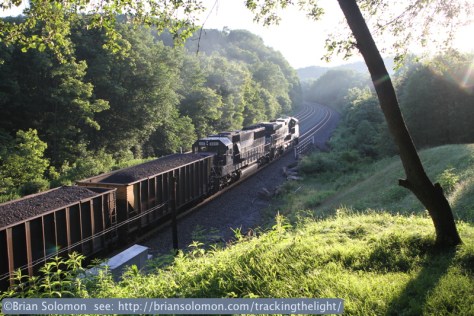1) Use your foreground. Unless you’re a ballast enthusiast, avoid emphasizing the ballast. Too many railroad photographs suffer from excessive foreground clutter and other distracting elements, so when you’re composing an image pay attention to the bottom of your frame.
2) Watch your focus. Although most modern cameras have auto focus systems, too many use center-weighted auto-focusing sensors. These produce an unfortunate side-effect of encouraging novice photographers to center their subject, which tends towards bland and ineffective composition. More advanced cameras have tools such as variable focus points and focus locks that help you get around the centering problem.

3) Avoid Flare. One of the reasons traditional photography technique stressed over the shoulder lighting was to avoid the unpleasant effects of lens flare. This is caused when the primary light source hits the front element of your lens and cause streaks and patterns across your image while lowering overall contrast. You can make successful backlit photographs by finding ways to minimize direct sun or other primary light sources; stand in the shadow of a tree, building or other object; no shadows available? Make your own with a flat piece of cardboard, book, or spare copy of TRAINS magazine. One last point: while you should avoid flare, this doesn’t necessarily mean you should eliminate it entirely. In certain circumstances, a little flare can improve a photo. Watch the way Hollywood uses flare for dramatic effect.












